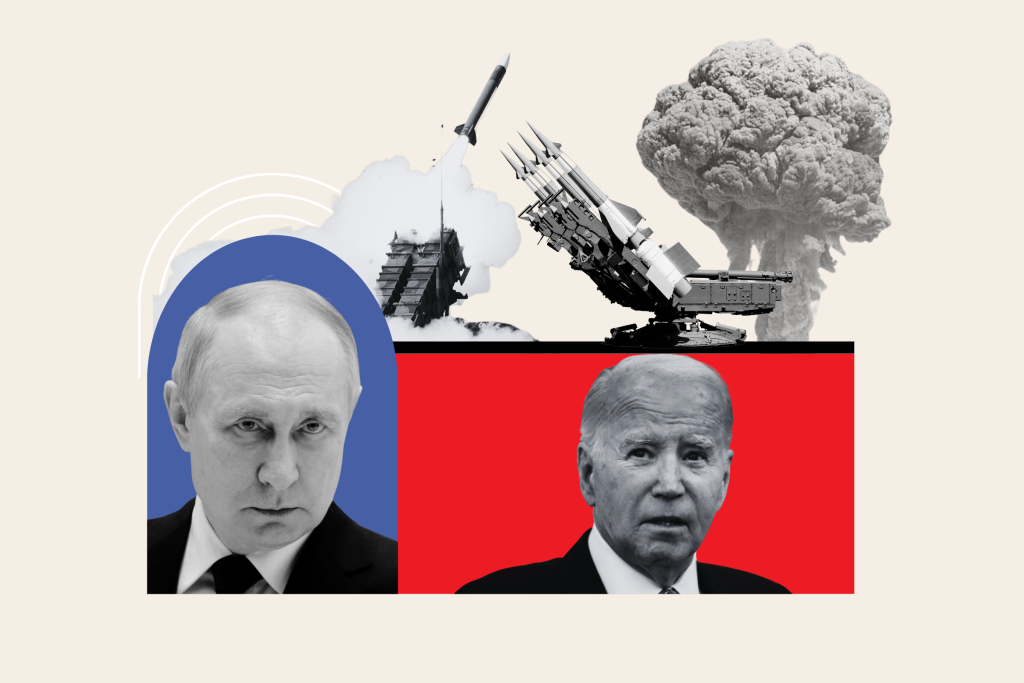The Oreshnik Missile: A New Dimension in Warfare?
The recent deployment of Russia’s experimental hypersonic ballistic missile, the Oreshnik (hazel tree), has raised concerns about its potential impact on the dynamics of nuclear warfare. This intermediate-range missile, tested in an attack on a Ukrainian defense factory, reportedly carries multiple warheads and sub-munitions, showcasing its destructive capabilities. Although intermediate-range missiles are banned under a treaty from which the US withdrew in 2019, Russia asserts its right to develop and deploy such weapons. President Putin emphasized that the Oreshnik does not necessitate a revision of Russia’s nuclear doctrine, which was recently updated to permit nuclear responses to conventional attacks backed by nuclear powers. The Pentagon, however, downplays the missile’s significance, characterizing it as another attempt to inflict harm in Ukraine rather than a game-changer. Putin has suggested that a sufficient number of such advanced weapons could obviate the need for nuclear weapons altogether, a claim met with skepticism by some experts.
The Oreshnik is believed to be a modified version of Russia’s RS-26 Rubezh missile, incorporating elements of the Bulava missile. It travels at hypersonic speeds (Mach 10 or higher), allowing for maneuverability and precision strikes. Its MIRV capability enables it to target multiple locations simultaneously. As an intermediate-range rather than intercontinental ballistic missile, the Oreshnik’s deployment is not constrained by the New START treaty. This distinction is crucial, providing Russia with more flexibility in its use. Putin’s boasts about the missile’s power and implications for nuclear strategy raise important questions about Russia’s long-term military objectives and their potential impact on global security.
Russia’s updated nuclear doctrine, signed into law in November 2023, outlines the country’s deterrence strategy against potential adversaries. It underscores the certainty of retaliation in case of aggression against Russia or its allies. This update followed the US authorization for Ukraine to use long-range Western weapons for deep strikes into Russian territory, indicating an escalation of the conflict. While Ukrainian intelligence initially estimated a potential production capacity of 300 Oreshnik missiles annually, this figure was disputed by Ukrainian officials who labeled it disinformation intended to instill fear. The actual production capacity remains uncertain, given the impact of sanctions on Russia’s high-tech manufacturing capabilities.
Expert opinions diverge on the Oreshnik’s impact on nuclear warfare. Some argue that Russia’s existing nuclear capabilities already provide global reach, rendering the Oreshnik less significant in that regard. The missile’s nuclear capability, however, introduces ambiguity in any launch, as the warhead type remains unknown until detonation. This uncertainty adds a layer of complexity to the strategic calculations of both Russia and its adversaries. Furthermore, Russia’s updated nuclear doctrine is seen by some as an intimidation tactic aimed at discouraging Western support for Ukraine. Moscow’s strategy appears focused on conveying the escalating costs of continued assistance to Kyiv, hoping to pressure a swift resolution to the conflict on favorable terms.
Analysis by military experts suggests that the Oreshnik’s deployment doesn’t significantly alter the current strategic balance. Russia’s use of drones and a combination of ballistic and cruise missiles remains its most effective tactical approach, particularly during the winter months. The Oreshnik, therefore, is not expected to fundamentally change the calculations regarding long-range strikes for either side. The broader concern lies in the overall strategic stability, where critical red lines, such as direct NATO involvement in Ukraine or a Russian conventional attack on NATO members, have not been crossed. The adherence to certain norms, like pre-launch notifications to the US, suggests a cautious approach despite escalating tensions.
The introduction of the Oreshnik and the updated nuclear doctrine underscore the complex and evolving nature of the conflict in Ukraine. While its immediate impact on the battlefield may be limited, the missile’s potential to alter strategic calculations, particularly in the context of nuclear deterrence, cannot be ignored. The ongoing conflict necessitates careful monitoring of Russia’s military developments and its strategic pronouncements to fully comprehend their implications for regional and global security. The Oreshnik serves as a stark reminder of the escalating nature of the conflict and the potential for further dangerous developments.










